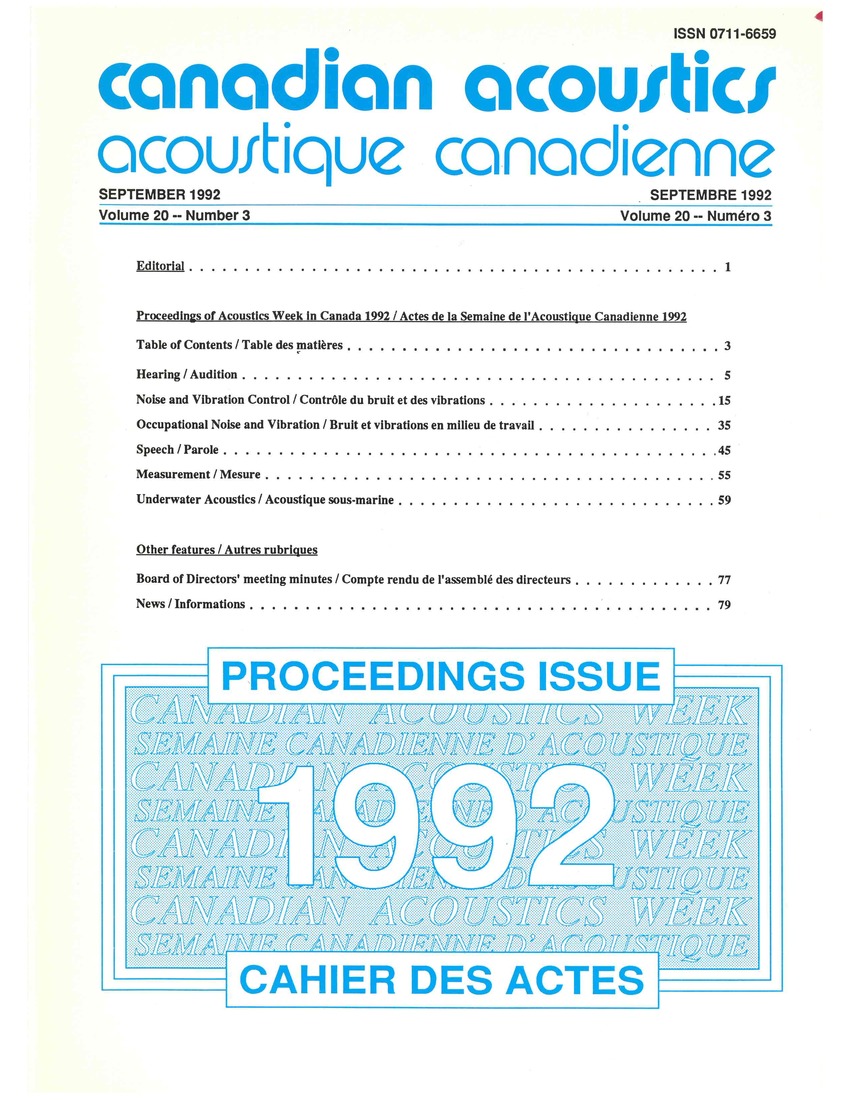Reciprocal travel time scintillation analysis
Keywords:
acoustic wave velocity, oceanographic regions, sea ice, underwater sound, Arctic boundary layer, acoustical reciprocal transmissions, line-averaged velocity measurements, high frequency velocity fluctuations, advection, turbulent velocity fine structure, sonic anemometers, spectral transfer functions, dimensionless wavenumberAbstract
During a study of the Arctic boundary layer. Menemenlis and Farmer used acoustical reciprocal transmissions to obtain line-averaged velocity measurements along 200 m horizontal paths in the mixed layer beneath ice. The present discussion is motivated by a desire to interpret the observed high frequency velocity fluctuations in terms of the advection and evolution of turbulent velocity fine structure. Kaimal et al. (1968) discussed the problem of line-averaging in the context of extending the useful range of sonic anemometers to scales shorter than the acoustic paths. They derived transfer functions that relate measured and ideal one-dimensional power spectra. The present authors investigate the asymptotic behaviour of the spectral transfer functions, as the length of the measuring baseline is increased, and derive analytic expressions. The spectral transfer functions are shown to vary with dimensionless wavenumber and with angle between the measuring baseline and the mean velocity. The analysis is extended to anisotropic and inhomogeneous flows. Finally, some experimental data taken in the boundary layer beneath ice is compared with the theoryAdditional Files
Published
How to Cite
Issue
Section
License
Author Licensing Addendum
This Licensing Addendum ("Addendum") is entered into between the undersigned Author(s) and Canadian Acoustics journal published by the Canadian Acoustical Association (hereinafter referred to as the "Publisher"). The Author(s) and the Publisher agree as follows:
-
Retained Rights: The Author(s) retain(s) the following rights:
- The right to reproduce, distribute, and publicly display the Work on the Author's personal website or the website of the Author's institution.
- The right to use the Work in the Author's teaching activities and presentations.
- The right to include the Work in a compilation for the Author's personal use, not for sale.
-
Grant of License: The Author(s) grant(s) to the Publisher a worldwide exclusive license to publish, reproduce, distribute, and display the Work in Canadian Acoustics and any other formats and media deemed appropriate by the Publisher.
-
Attribution: The Publisher agrees to include proper attribution to the Author(s) in all publications and reproductions of the Work.
-
No Conflict: This Addendum is intended to be in harmony with, and not in conflict with, the terms and conditions of the original agreement entered into between the Author(s) and the Publisher.
-
Copyright Clause: Copyright on articles is held by the Author(s). The corresponding Author has the right to grant on behalf of all Authors and does grant on behalf of all Authors, a worldwide exclusive license to the Publisher and its licensees in perpetuity, in all forms, formats, and media (whether known now or created in the future), including but not limited to the rights to publish, reproduce, distribute, display, store, translate, create adaptations, reprints, include within collections, and create summaries, extracts, and/or abstracts of the Contribution.


